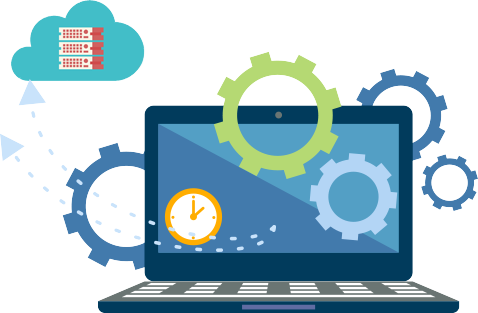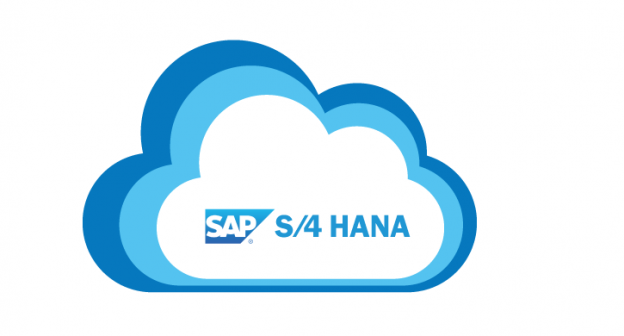There can be no two opinions about the need to chalk out well structured plans and strategic preparations before implementing the process of migrating business processes to another SAP landscape.
Decision to migrate the existing data and business processes to S4/ HANA can guarantee a broad spectrum of benefits including mitigation of data footprint, simplification of IT infrastructure, and reduction of operational as well as hardware expenditure.
Shift towards S/4 HANA
Thanks to some of the most significant developments concerning S/4 HANA. ECC, R/1, R/2 and R/3, there has been a considerable improvement in the Enterprise Resource System offered by SAP ERP Cloud. Cloud computing technology is obviously encouraging development in the onsite as well as cloud iterations of SAP. Moving to S/4 HANA is also the need of hour for a large chunk of ECC users since the support to ECC would come to an end after few years.
Migration to S4 HANA can be a result of three distinct scenarios including the unavoidable circumstances presented due to the fast approaching deadline for ECC support in terms of the maintenance.
Many enterprises are contemplating to adopt S/4 HANA as an entirely new implementation that would create a need for data transition to HANA environment in addition to begin a new change process involving a large array of functionally configurations. New adoption of HANA demands processing of standardized objects to comply with S/4 HANA ecosystem.
 Large enterprises that operate at diverse global locations need to transform their entire business infrastructure in a unified S/4 HANA landscape that is operating across all global units of the business. Needless to mention, the transformation process will also have to include migration of data along with the entire gamut of business processes to operate in line with HANA.
Large enterprises that operate at diverse global locations need to transform their entire business infrastructure in a unified S/4 HANA landscape that is operating across all global units of the business. Needless to mention, the transformation process will also have to include migration of data along with the entire gamut of business processes to operate in line with HANA.
There can be a third kind of digital transformation to S/4 HANA requiring a comprehensive transformation of the current system and analyzing compatibilities of infrastructure and business processes to match SAP HANA landscape. This option is also going to feature migration of data workloads.
Presently, the onsite iteration of S/4 HANA requires system conversion along with transformation of the landscape in spite of the fact that new implementation can be done within on-premise as well as well as cloud ecosystems.
Setting the stage for transition
Once you have defined the S4/ HANA transition approach and prepared your processes by organizing the plans, you may anticipate a smooth S/4 HANA transition that is quick and hassle free. However it is not going to be as one may expect because there is a probability of encountering roadblocks of complexity.
Migration to S/4 HANA is designed to enhance performance metrics of business. However, one needs to plan and execute a wide spectrum of operations that are being listed as follows.
Before creating a guide for roadmap to S/4 HANA transition, one must make a thorough analysis of impact that would be caused as the workloads migrate to the new environment. This should follow an in-depth planning for management of project, custom code, data, system, and landscape.
Transition to SAP S/4 HANA requires the concerned employees to be trained for managing various aspects of the new infrastructure. Of course, you will have to implement strategies for optimization of business processes and license auditing.
Execution of the above list of operations can be extremely overwhelming unless one leverages an accelerator for the same. The smart accelerator is aimed at simplifying the intricate and time consuming transition process to S/4 HANA. The automated solution is backed by profound global experience of SAP implementation for achieving multiple enterprise objectives.
Highlights of accelerator
The accelerator rapidly assesses and analyses the ECC system to know impact of S4/ HANA. This also includes precise estimation of time and project requirements in terms of efforts. After making sure that the turnkey plans are appropriately aligned in terms of methodology for SAP Activate the well-organized sector specific implementations.
The execution stage involves remarkable contribution from data management, custom code management, and project management. Milestones can be easily achieved due to successful accomplishment of training and optimization of business processes. S4/ HANA can thus go live and run without any hiccups with assured support.
Adoption of accelerator for streamlining transition to S/4 HANA is actually a tiny footstep designed to make customer’s life easy in the complex SAP ecosystem. The steps for successful migration generally involve preparation, exploration, realization, deployment followed by actual implementation of project with S/4 HANA.
The small step is actually perceived as a big gain for S4 HANA because the accelerator empowers the project by aligning with methodology of SAP Activate. It also automates diverse set of activities leading to a huge reduction in the total cost of ownership. All these advantages can collectively boost business performance and productivity of different teams involved in the project.






 Live Chat
Live Chat
